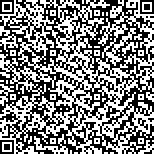| 摘要: |
| 呼和浩特地处半干旱地区,塞上
老街片区是呼和浩特市最具代表性的历史文
化步行街区之一,受气候影响,夏季人流量集
中,春秋过渡季人流不稳定,因此梳理其过
渡季微气候整体环境形成特征及其影响因
素,对该地区可持续步行街道景观设计具有
重要指导意义。本研究基于街道形态特征,
结合实地调研和微气候数据采集、EN V Imet
模拟、SPSS相关性对比分析,探究微气
候变化机制,总结微气候营造策略。研究表
明受试街道长宽比、高宽比及走向均对其过
渡季微气候有不同程度的影响,空气温度、瞬
时风速对人流量影响显著,并确定街道适宜
高宽比为0.5—0.75,长宽比为70,街道形态以
东西走向为佳,依此构建适宜的街道形态雏
形。鉴于历史街区保护原则,在原有风貌基础上,合理增加街道绿化,根据软件模拟结果,确定
绿地面积以占地5%为宜,乔—灌—草双侧式绿地结构对温度、风速总体调控较好,适宜采用乔
灌比7:3、常绿落叶比4:6的植物配置,以提升街道游览体验、改善街道生态环境,为半干旱地区
未来地域性街道生态性营造及街区可持续设计提供参考。 |
| 关键词: 半干旱地区 步行街道 微气候 街道形态 绿地 |
| DOI:10.13791/j.cnki.hsfwest.20190304 |
| 分类号: |
| 基金项目:内蒙古自然科学基金项目[2017MS(LH)
0501];内蒙古自治区高等学校科学研究项目
(NJZZ17083) |
|
| Research on Microclimate Ecology Construction of Pedestrian Streets in Transitional Season inSemi-Arid Areas—A Case Study of the Saishang Old Street, Tongshun Avenue and Dazhao Street in Hohhot |
|
WU Yuanyuan,WANG Aixia,QIN Yanan,WANG Sijia
|
| Abstract: |
| The research object of this article is Hohhot, Inner Mongolia, which is located in
the semi-arid area of our country. Saishang Old Street has a strong historical and cultural
precipitation and is one of the most representative historical and cultural pedestrian streets in
Hohhot. According to the survey conducted by the Meteorological Bureau and field survey data,
Saishang Old Street is located in a region with unique climate, and is greatly affected by the
unique climate of the local region. When in summer, the number of pedestrians in Saishang Old
Street pedestrian street is relatively stable, and the number of people has always been relatively
large. When in spring and autumn, the number of pedestrians on the walking streets changes
inconsistently, sometimes more and less. Therefore, the microclimate of the transition season in
Saishang Old Street and the overall environmental changes brought about by the microclimate
are summarized. By analyzing the overall environmental changes brought by microclimate,
the factors affecting the microclimate changes of pedestrian streets are analyzed. According to
the sustainable development of pedestrian street landscape design, through the summary of the
overall environmental changes brought by climate and the factors affecting the microclimate
changes of pedestrian streets, it has important guiding significance for the sustainable
development of pedestrian street landscape design in Hohhot, Inner Mongolia. This study is
based on the existing street morphological characteristics of the tested pedestrian streets. At the
same time, combined with on-the-spot investigation during the transition season of pedestrian
streets, on-the-spot collection of microclimate data of pedestrian streets, ENVI-met microclimate
simulation and correlation analysis of SPSS microclimate change factors, the overall
environmental change caused by street microclimate change is analyzed comparatively, and
then the characteristics and mechanism of microclimate change during the transition season of
pedestrian streets are explored. Finally, the strategies and methods of microclimate construction during the transitional season in Saishang Old Street area of Hohhot are summarized. Research shows that the ratio of length to width of streets has
an impact on the microclimate during the transitional season. At the same time, the microclimate in the transitional season is also affected by the
aspect ratio of streets and the direction of streets. Through SPSS analysis, it is found that there is no obvious correlation between visitors flowrate
and humidity and illumination intensity, but there is a significant correlation between visitors flowrate and air temperature and instantaneous wind
speed. Among them, air temperature is positively correlated with human flow, while instantaneous wind speed is negatively correlated with human
flow. In order to further explore the impact of street morphological factors on street microclimate, the author determines the boundary of simulation
values according to the current street morphology, and simulates the street microclimate with aspect ratio of 90, 70, 50, 40, 30, 20, and aspect ratio
of 0.5, 0.75, 1 and 1.25 respectively, so as to compare and analyze the most suitable aspect ratio and aspect ratio of street. The suitable ratio of height
to width is values ranging from one-half to three-quarters, and the aspect ratio is seventy, and the street is East-West direction. Based on the above
research, the basic form of suitable streets is determined. By determining the appropriate basic form of streets, it can provide ideas for the design
of pedestrian streets in semi-arid areas. After determining the basic prototype of the street, explore what methods can be used to enhance visitors’
street browsing experience and improve the ecological environment of the street. Through related research literature, it was found that the ecological
environment of streets could be improved by reasonable increasing street greening, changing underlying surface pavement and adding ventilation
corridors. Because of the principle of protection of historical blocks, it is only reasonable to increase street greening on the basis of the original
form of streets, and to improve the microclimate of streets by increasing street greening. In the first place, taking one of the streets as an example,
the author uses ENVI-met software to simulate the green space rate in the streets. Account for five percent, ten percent, fifteen percent and twenty
percent of the green space rate were selected to simulate, and finally the green space area was determined to occupy 5% of the land. After that, the
plant planting structure and the situation of planting on one or both sides of the street were simulated. It was found that the tree-shrub-grass both
sides green space structure was more suitable, and it had better overall control of temperature and wind speed. Then, the ratio of trees to shrubs
and evergreen deciduous ratio were simulated. The results showed that the ratio of trees to shrubs was 7:3 and the ratio of evergreen deciduous ratio
was 4:6, which was suitable for street use. Through the above methods, tourists can improve their street browsing experience. It can also improve
the ecological environment of streets. In the meantime, it provides a reference for the future ecological construction of regional streets in semi-arid
areas. It also provides ideas for the sustainable design of future blocks. |
| Key words: Semi-arid Areas Pedestrian Streets Microclimate Street Shape Green |


